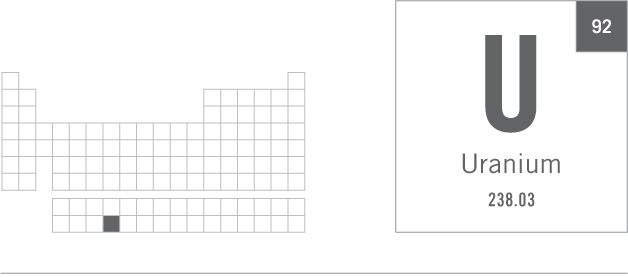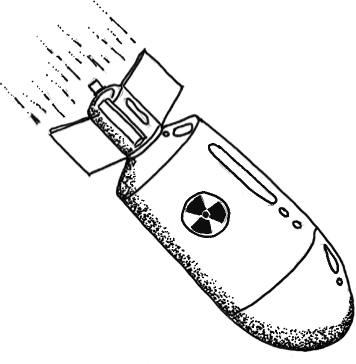“E’er since my rays were first exposed, the world’s ne’er been the same,
The wrath unleashed when e’er I’m split, mankind’s done well to tame!
DU rights ships when seas get rough.
Alas, still used in sharp-nosed shells, to man’s ongoing shame!”

“E’er since my rays were first exposed, the world’s ne’er been the same,
The wrath unleashed when e’er I’m split, mankind’s done well to tame!
DU rights ships when seas get rough.
Alas, still used in sharp-nosed shells, to man’s ongoing shame!”
FOURTH IN THE ACTINOID SERIES
Uranium, with its atomic number of 92, is generally regarded as the last of the naturally occurring elements on Earth. All elements beyond uranium on the periodic table are considered synthetic, with a caveat. While, strictly speaking, neptunium (Np, atomic number 93), plutonium (Pu, 94), and berkelium (Bk, 97) are also naturally occurring elements, they occur in such trace amounts that they were discovered in nature only after they had first been artificially made.
Uranium was first extracted as an oxide (in a compound with oxygen) from pitchblende ore in 1789 by the German pharmacist Martin Heinrich Klaproth (1743–1817). Fifty-two years passed before a sample of the silvery-gray actinoid metal was first isolated by the French chemist Eugène-Melchior Péligot (1811–1890) in 1841. Uranium wasn’t considered hazardous for much of the 19th century: its salts were used as pigments in ceramic glazes and colored glass. But that changed in 1896 when French physicist Henri Becquerel left a sample of uranium salt on top of an unexposed photographic plate inside a cupboard. The fogged image that developed on the plate—as if the plate had been partly exposed to light—prompted Becquerel to deduce (correctly) that the uranium must be radiating some kind of invisible rays. This serendipitous, world-changing observation signaled the dawn of the nuclear age. Becquerel’s groundbreaking deduction, along with his subsequent work on radioactivity, earned him a half share of the 1903 Nobel Prize in Physics. (See “Radium, Ra” on page 256 and “Polonium, Po” on page 244 for more details.)
Naturally occurring uranium consists almost exclusively of the relatively benign isotope uranium-238 (a mildly radioactive emitter of alpha particles). But it also contains about 0.7 percent of the highly radioactive uranium-235 isotope. Uranium-235’s ability to sustain a chain reaction is what makes it a suitable fuel for nuclear reactors. When an atom of uranium-235 is struck by a neutron, it undergoes fission (meaning it splits in two) and releases energy in the form of heat. This heat is used to boil water to produce steam, which, in turn, drives turbines to generate electrical power. This fission reaction crucially also produces two neutrons, which are then capable of splitting more atoms to release more energy and more neutrons, and so on—a chain reaction. But for the chain reaction to be realized, a critical mass of uranium-235 is needed so that a sufficient number of the neutrons produced are captured by other uranium atoms. The critical mass is obtained by enriching naturally occurring uranium with uranium-235 to about a 3 percent concentration. One of humanity’s great achievements has been controlling uranium-235’s fission reaction within the cores of nuclear reactors via the strategic use of control rods. (See “Cadmium, Cd” on page 141 for some information on how control rods work.) Intentionally withholding such control unleashed a wrath plain for the whole world to see: the Japanese city of Hiroshima was razed to the ground on August 6, 1945 by the energy released from a runaway uranium-235 fission chain reaction.
two-three-five
dee-you
[right: verb — as in “to right a ship,” meaning to restore a ship to an upright position]
Spent nuclear fuel rods only contain about 0.2 percent uranium-235, making these depleted uranium (also known as DU) rods around 40 percent less radioactive than naturally occurring uranium. DU is so dense it’s sometimes attached to the keels of ships to provide the necessary ballast to keep ships upright in choppy seas.
DU has the capability to form sharp fragments as it shatters on impact (rather than just flattening like many other metals). This characteristic has led to the controversial use of DU in the noses of armor-piercing, self-sharpening artillery shells. The metal fragments also ignite once formed, engulfing the target in flames and making the shells extremely lethal.
